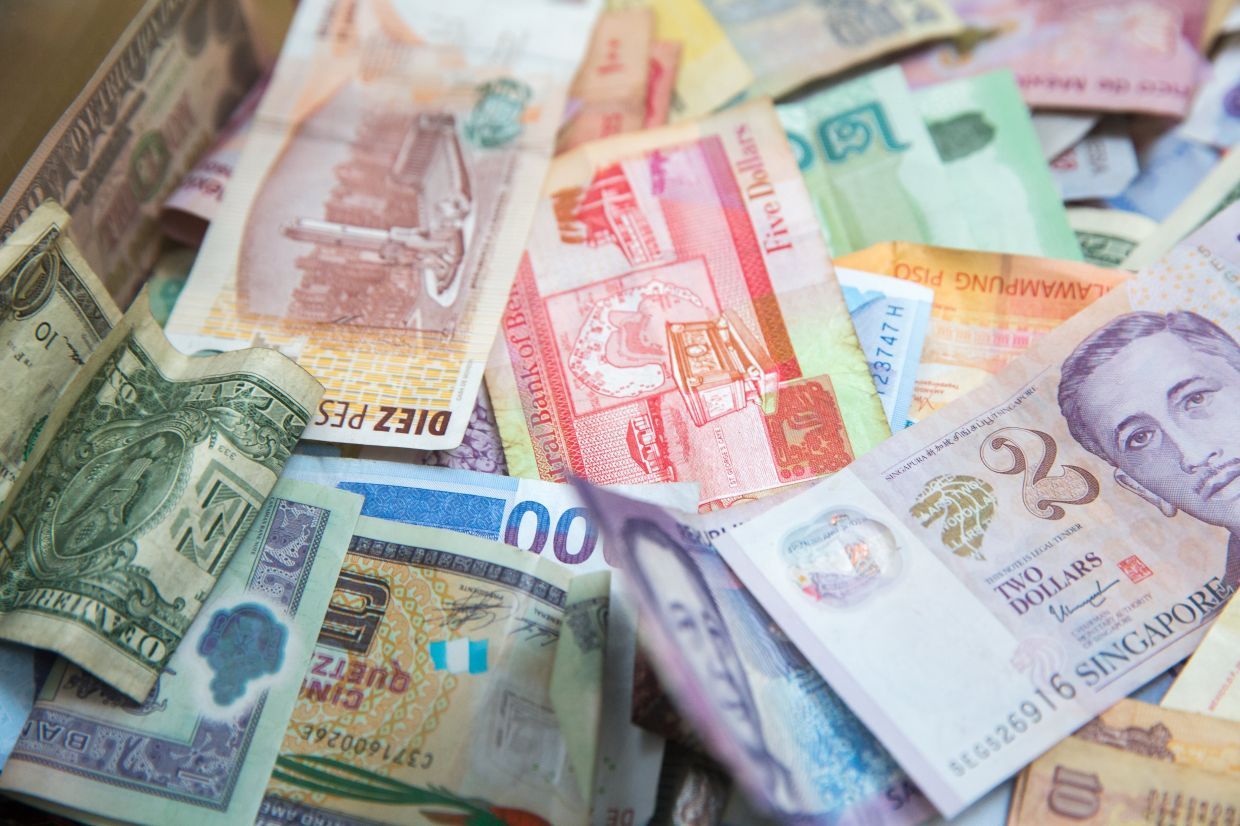Forex
Asian currencies gain as Fed pause bets weigh on U.S. dollar

Asian currencies strengthened on Friday against a weak U.S. dollar, with Thailand’s baht leading the charge, after a jump in U.S. weekly jobless claims fuelled expectations of a pause in the Federal Reserve’s policy tightening cycle next week.
The Thai baht appreciated as much as 0.8% to a one-week high, though it is down 0.1% for the week. South Korea’s won, the Malaysian ringgit, and India’s rupee USDINR strengthened between 0.1% and 0.9%, respectively.
“The Fed looks set to pause in June, but with inflation remaining a concern the Fed is likely to hold a hawkish bias for some time,” analysts at ANZ said in a note.
“An upside surprise (in CPI) could bring a June hike back on the table.”
Market participants will keenly watch out for Tuesday’s U.S. consumer price index (CPI) data just a day before the Fed’s policy decision.
The number of Americans filing new claims for unemployment benefits surged to the highest in more than 1-1/2 years last week. The data led to a retreat in the U.S. dollar as investors took it as an indication of a slowing labour market.
The dollar index DXY eased 0.1% to 103.4.
In Turkey, the lira hit its lowest level on record, down as much as 1.8%, ahead of the expected appointment of a new central bank governor.
The currency, which showed an easing in its sell-off in the previous session, stood at 23.54 against the U.S. dollar by 0751 GMT.
Meanwhile, foreign investors bought $22.4 billion worth of emerging Asian ex-China portfolio assets in May, marking the largest inflows since April 2011, according to a report by Khoon Goh, head of Asia research at ANZ.
In the Philippines, the central bank said on Thursday it will cut banks’ reserve requirement ratios (RRR) to ensure stable domestic credit conditions, moving to offset the expiration of liquidity-enhancing relief measures for lenders during the pandemic.
The Bangko Sentral ng Pilipinas, however, reiterated that a lower RRR did not indicate a shift in its monetary policy stance.
The peso appreciated 0.1%, while stocks in Manila gave up 0.4%.
In Malaysia, factory output shrank by 3.3% in April, government data showed, below expectations of a 2% expansion according to 13 economists surveyed in a Reuters poll.
In India, the country’s chief economic advisor highlighted expectations of positive growth momentum in fiscal 2024, a day after the central bank kept lending rate steady but signaled that monetary conditions will remain tight to curb inflation.
Analysts at Barclays said they see no further interest rate hikes by the Reserve Bank of India, although the risk of another 25 bps hike lingers.
In China, inflation data, and particularly the producer prices, once again highlighted weakness in the manufacturing sector and an economy struggling for lift-off after COVID.
Equity markets in the region traded mixed, with shares in Thailand SET and Singapore STI retreating 0.3% and 0.1%, respectively. On the positive ledger, shares in Taiwan TAIEX and South Korea KOSPI advanced 0.9% and 1.16%, respectively.

 Forex3 years ago
Forex3 years agoForex Today: the dollar is gaining strength amid gloomy sentiment at the start of the Fed’s week

 Forex3 years ago
Forex3 years agoUnbiased review of Pocket Option broker

 Forex3 years ago
Forex3 years agoDollar to pound sterling exchange rate today: Pound plummeted to its lowest since 1985

 Forex3 years ago
Forex3 years agoHow is the Australian dollar doing today?

 Cryptocurrency3 years ago
Cryptocurrency3 years agoWhat happened in the crypto market – current events today

 World3 years ago
World3 years agoWhy are modern video games an art form?

 Commodities3 years ago
Commodities3 years agoCopper continues to fall in price on expectations of lower demand in China

 Economy3 years ago
Economy3 years agoCrude oil tankers double in price due to EU anti-Russian sanctions





















